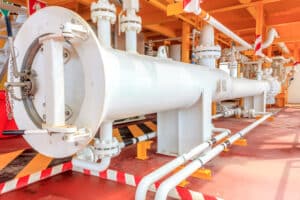Pipeline pigging may sound whimsical, conjuring images of actual oinks echoing within vast metal caverns, but the reality is much more grounded in the necessity and rigor of pipeline maintenance. The term ‘pigging’ originates from the squealing sound that early devices made as they moved through the pipelines, tackling the murky world of sludge, wax, and debris.

In this in-depth exploration, we’re not only demystifying the science behind pigging operations but also unpacking the pivotal role pigging plays in keeping the world’s most crucial infrastructure running safely and efficiently. From the classifications of pigs to the newest technological advancements, this post will act as a comprehensive guide for both the uninitiated and seasoned professionals seeking to deepen their understanding of a complex yet indispensable operation. At SUN Pipeline Solutions in Tulsa, OK, we specialize in delivering premium pipeline-pigging products and services to clients worldwide. With years of experience and a commitment to innovation, we’re dedicated to staying at the forefront of the ever-evolving world of pigging.
Understanding Pigging Operations
Before we venture any further into the technical details, it’s important to grasp the basic principles of pigging. Pipeline pigging involves the use of ‘pigs’—devices inserted into a pipeline, either to clean it or to carry out various other tasks without stopping the flow of the product being transported. The ‘pig’ can sweep, scrape, or separate different products in multi-product pipelines, and its application is paramount to maintaining the integrity and efficiency of the system.
While the traditional ‘pig’ could merely remove dirt and rust, technological leaps have steered us toward ‘smart pigs’—sophisticated in-line inspection tools containing advanced diagnostic equipment such as cameras, transducers, and gauges. ‘Pigging out’ now means far more than just getting rid of debris; it’s about analyzing the health of the pipeline and predicting failures before they occur.
The Classification of Pipeline Pigs
Pipeline pigs can be broadly classified into three main categories based on their functions:
Utility Pigs
Known for their basic capabilities, utility pigs are used for tasks like batching, dewatering, and sweeping the line of built-up debris. They come in various designs, including solid cast pigs, mandrel pigs, and foam pigs, each serving a specific purpose depending on the nature of the materials transported.
Inspection Pigs
The main function of inspection pigs colloquially referred to as ‘smart pigs,’ is to inspect the integrity of the pipeline. Fitted with advanced technology, these pigs are deployed to detect inconsistencies, corrosion, or defects within the pipeline that could lead to leaks or other issues. The type of data collected by these pigs can range from simple geometry measurements to detailed scans of the pipe wall thickness.
Specialty Pigs
Specialty pigs are highly specific for certain applications; these could include gauging pigs, which measure internal pipeline diameter with high precision, or magnetic flux leakage (MFL) pigs, which can detect pinholes in the pipe wall. These pigs are used ad-hoc based on the unique needs of the pipeline and the materials it carries.
The Pigging Process Explained
The pipeline pigging process, depending on the specific operation, can vary in complexity. However, the general sequence is as follows:
Pre-Inspection
Before any pig is inserted into the pipeline, it’s crucial to conduct a thorough inspection of the equipment and the pipeline’s internal conditions. Parameters such as pressure, temperature, and the nature of the product are assessed to select the appropriate pig for the job.
Pig Insertion
The pig is typically inserted into the pipeline through a pig launcher station. These are usually located upstream of the pigging point and come in various sizes to accommodate different pig types and pipeline diameters.
Pigging Process
The pig is propelled through the pipeline using the product flow, or in the case of cleaning, is pushed by an inert gas or liquid. As it travels, the pig effectively performs its function, whether it’s cleaning, inspecting, or otherwise.
Pig Removal
Upon completion, the pig is brought to a stop at the receiving end, known as the pig catcher. Here, it’s halted and removed from the pipeline, and any material it has collected is disposed of or analyzed as required.
The Importance of Pigging in Pipeline Maintenance
The task of pigging is not just routine maintenance. It’s a proactive approach that can significantly extend the operational life of a pipeline. By keeping the interior of the pipe clean and clear, the risk of corrosion, pressure drops, and potentially catastrophic failures is greatly reduced. It also ensures the quality of the product and compliance with environmental regulations.
Contact SUN Pipeline Solutions for Your Pigging Needs
SUN Pipeline Solutions in Tulsa, OK is a leader in the pigging industry, offering state-of-the-art solutions for pipeline inspection and maintenance. With our advanced technology and experienced team, we provide comprehensive and reliable pigging services to keep your pipelines running at their best. Contact us today to learn more about our services and how we can help optimize your pipeline operations.

